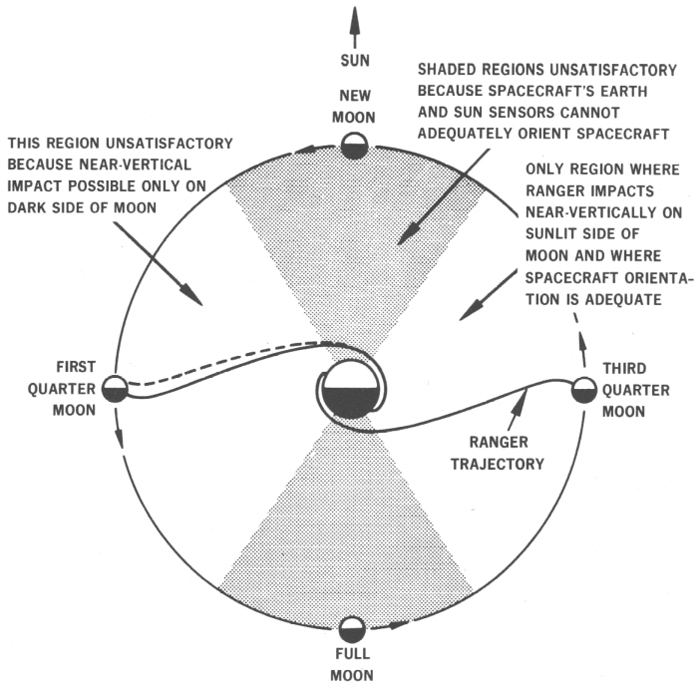Ranger 7
From Spacefaring
Ranger 7 was the first NASA space probe to successfully transmit close-up images of the lunar surface back to Earth. It was also the first completely successful flight of the Ranger program. Launched on July 28, 1964, Ranger 7 was designed to achieve a lunar-impact trajectory and to transmit high-resolution photographs of the lunar surface during the final minutes of flight up to impact.
1964-07-28T00:00:00Z
1964-07-28T00:00:00Z
1964 Ranger 7
1964-07-28T00:00:00Z
1964-07-28T00:00:00Z
rocket launch
{"selectable":false,"showCurrentTime":false,"width":"100%","zoomMin":100000000000}
 Altitude: 3.6 miles. Area: 1.8 miles on a side. Smallest Visible Crater: 30 feet in diameter; 1 feet deep. Features: Angular rock mass in crater at upper left. Preliminary study indicates the mass to be several separate chunks.
Altitude: 3.6 miles. Area: 1.8 miles on a side. Smallest Visible Crater: 30 feet in diameter; 1 feet deep. Features: Angular rock mass in crater at upper left. Preliminary study indicates the mass to be several separate chunks. Head-on view of Ranger's six television cameras. The picturesreceived from Ranger are more than twice as good as those received on ordinary home television sets.
Head-on view of Ranger's six television cameras. The picturesreceived from Ranger are more than twice as good as those received on ordinary home television sets. Altitude: 11 miles. Area: 5.5 miles on a side. Smallest Visible Crater: About 45 feet in diameter. Features: Crater near upper left of area outlined in white.
Altitude: 11 miles. Area: 5.5 miles on a side. Smallest Visible Crater: About 45 feet in diameter. Features: Crater near upper left of area outlined in white. Photograph of moon (above) outlines aiming point area in Sea of Clouds were Ranger VII landed at 6:25:49 a.m. EDT, July 31. Map (below photograph) shows targeted and actual impact points, which are about 8 miles apart.
Photograph of moon (above) outlines aiming point area in Sea of Clouds were Ranger VII landed at 6:25:49 a.m. EDT, July 31. Map (below photograph) shows targeted and actual impact points, which are about 8 miles apart.





